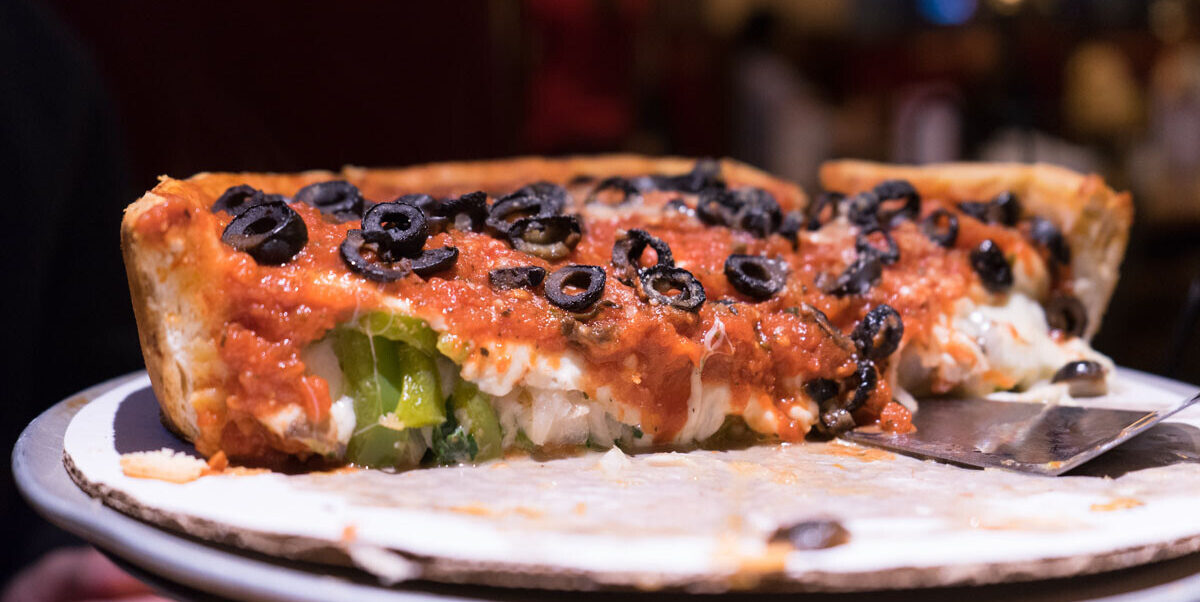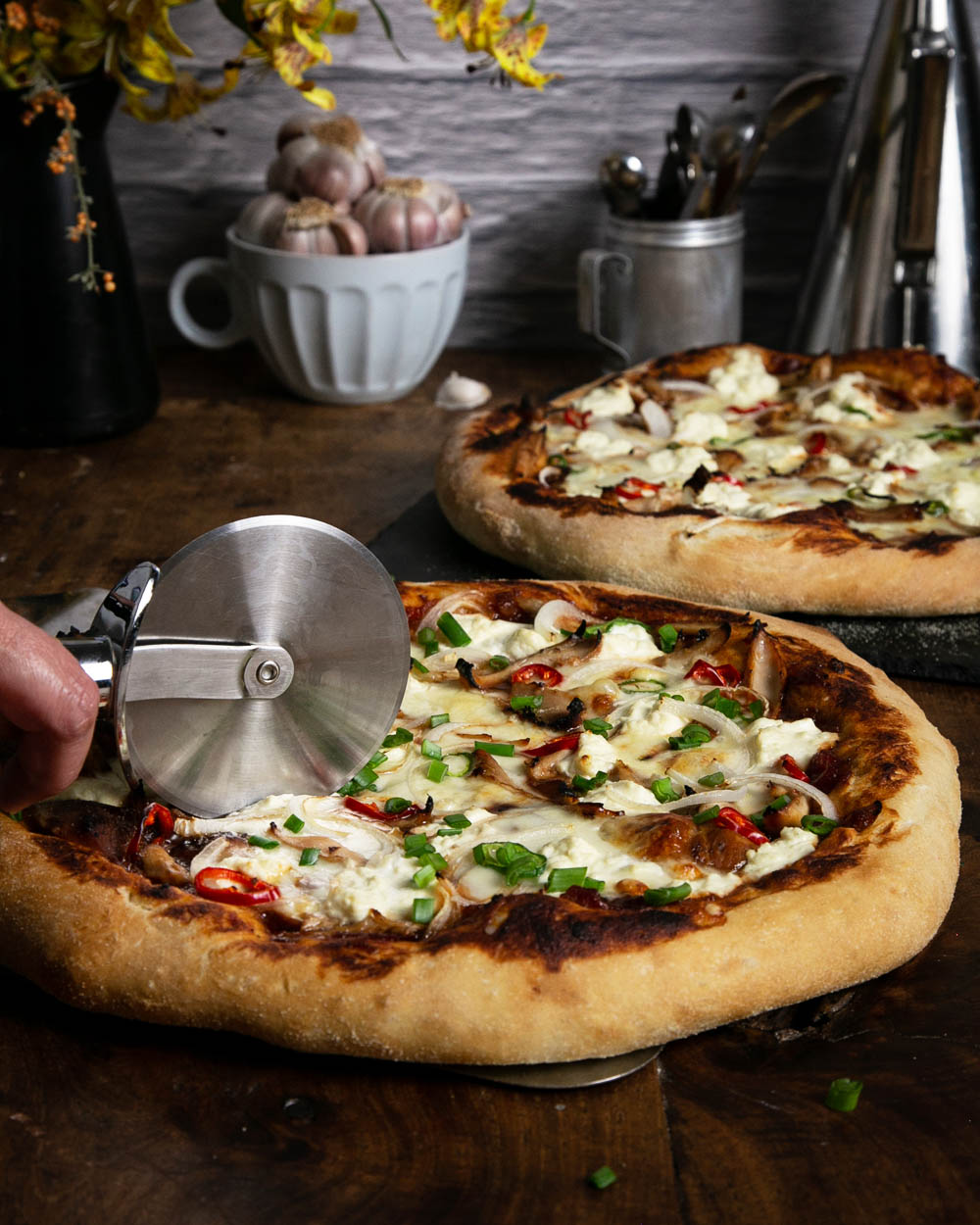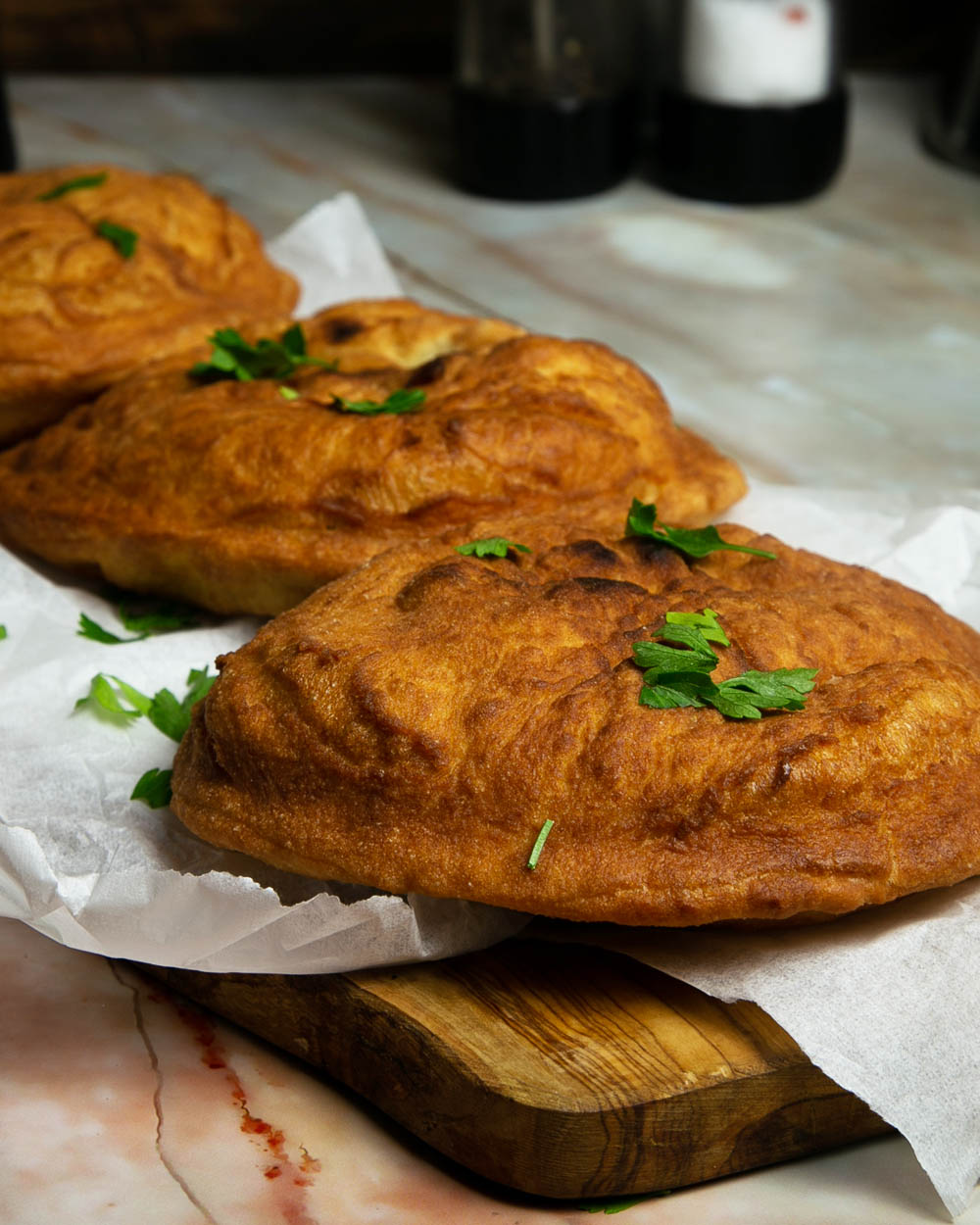Pizza is popular because it can be made in countless ways. It can have many different toppings or just be plain cheese. If Pizza is your thing, then neither of these situations really matters. Whether it’s hand-tossed or pan pizza, you’re just here for the pizza.
Pan pizza and Hand-tossed Pizza both have a crispy crust. Pan pizza utilizes a “pan” or cast iron skillet to cook. The dough stretches into a pan to create a thicker crust. Chicago-style and Detroit-style Pizza are both pan pizzas. The Sicilian Pizza recipe is a pan pizza that cooks on a rectangular sheet tray. So you see some of the best pizza in America is from a pan.

Hand-tossed pizza cooks directly on a pizza stone or baking sheet. Hence the name, this type of pizza is hand-tossed to create a thinner crust. Margherita pizza is a good example of a thin crust pizza. New York style pizza can also be hand-tossed.
It takes about three days to proof and age the dough for a classic hand-tossed pizza made from scratch. But you can eat it right away. Pizza dough can also be stored in the freezer for later consumption.
Pan pizzas are the best option for home Artisan Pizza makers. We’ve tried all the tips and tricks, from using an inverted baking sheet to a pizza stone. But pan pizza guarantees a crisp crust and golden top. There’s a good reason why it’s been trending everywhere you look online. Plus more and more pizzerias are serving up pan pizza.
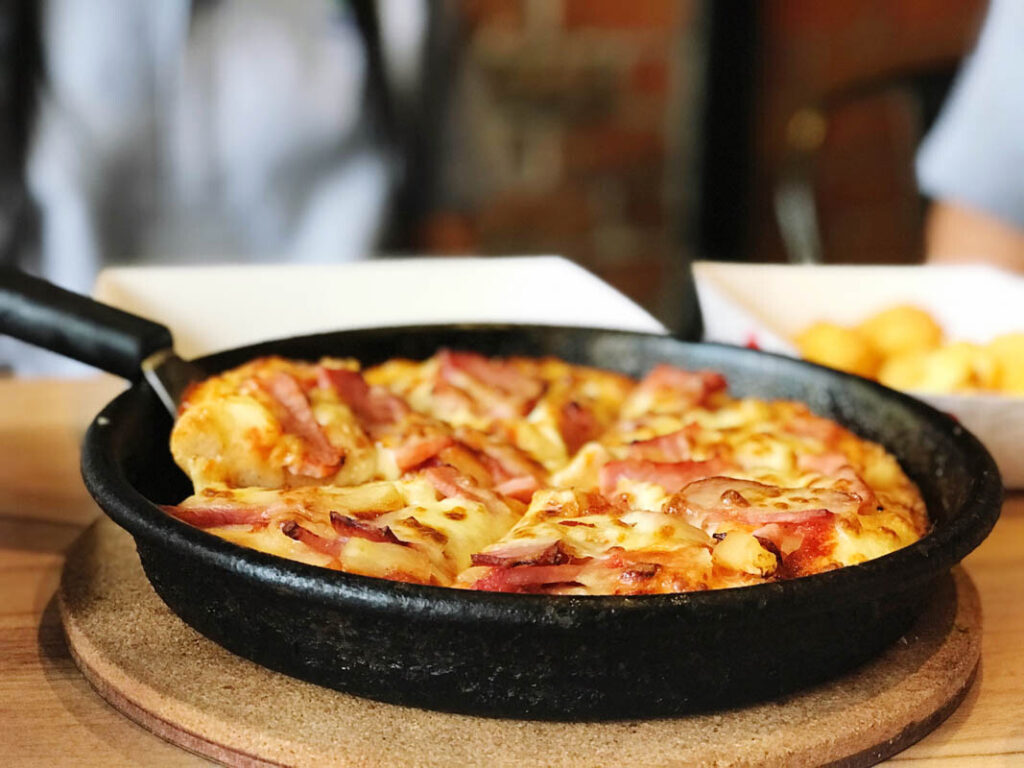
Is There a Difference Between Pan Pizza and Hand-Tossed Pizza?
Pizza dough is made with flour, dry yeast, warm water, salt, olive oil, and water. And you can cook it either on a pizza stone, or in a pan. The technique used to make it affects the final product.
Depending on your cravings, you can choose from a wide variety of pizza crusts. In terms of taste, they typically couldn’t be more different from one another. When compared to pan pizza, how does hand-tossed pizza fare?
The crust of a hand-tossed pizza is generally thinner and flatter. The crust of a pan pizza, however, is much more fluffy and thick. Usually measuring an inch or more in thickness. Because you spray oil on the pan before baking, the pan pizza crust looks fried.

The Major Distinctions Between Pan Pizza and Hand-Tossed
Here, We’ll compare two types of pizza: one hand-tossed and one baked in a pan. Read on if you’re curious about the differences between hand-tossed and pan Pizza.
Hand tossed vs pan pizza: The Dough
There isn’t much difference between the two kinds of Pizza when it comes to the ingredients used to make the dough. Flour, yeast, salt, warm water, and olive oil are typical in both pizza crusts.
By contrast, the dough for hand-tossed pizzas is typically thinner and less dense. This is because finding the ideal shape for baking requires throwing the dough in the air.
You need to get the dough to the perfect softness. But don’t go crazy, or it might crack when thrown in the air. When the pizza dough is tossed by hand, it often expands and covers the entire baking sheet.
Pan pizza dough is slightly more robust and substantial. These pizzas are light and airy because they can’t rise. As the pizza bakes, the dough spreads out rather than rising in the pan. That’s why after baking, the Pizza is soft and bubbly.
Pro Tip: Pan pizza dough, ideally, doesn’t rise on the pan like hand-tossed pizza dough. And that’s the key distinction between hand-pizza dough and pan-pizza dough.

The Preparation
Another area where hand-tossed pizza and pan pizza differ is in the cooking methods used. To make a hand-tossed pizza, knead the dough and then toss it in the air.
If you want to keep the dough from crumbling, it’s best to hold it with the back of your fist. When the dough is the right size and thickness, it’s placed on a preheated pizza stone or steel. And then cooks for 10 to 15 minutes at 500 degrees Fahrenheit (260 degrees Celsius).
A pizza peel is useful for taking pizzas in and out of the Pizza oven. But if you don’t have a peel handy, parchment paper will do in a pinch. Please remember that perfecting the art of hand-tossing dough requires time and effort. Expect to spend some time developing a pizza crust that won’t fall apart.
A pan pizza can be made more quickly than a hand-tossed one. It’s best to start by oiling the dough and rolling it into a ball. Then, press the dough into the base of a deep cake pan or cast-iron skillet using your fingertips. To achieve the desired form spray the pan with oil. Then poke the dough toward the edges of pan.
Be sure to oil the pan with at least a tablespoon before putting it in the Pizza oven. This will help you get a crispier crust and also keep the dough from sticking to the pan.
Pan pizzas require 25-35 minutes in an oven preheated to 500 degrees Fahrenheit (260 degrees Celsius). In addition, making a pan pizza calls for less expertise, because there is no need to toss the dough.

The Crust
When comparing hand-tossed Pizza to pan pizza, the crust is where you’ll really notice a difference. The crust of the hand-tossed Pizza is thinner and flatter. And there is less cheese and sauce on it.
Usually, when you toss dough, the air bubbles inside will pop. Therefore, the dough won’t rise much in the Pizza oven, and the crust will be on the thinner side of the medium. We want to emphasize that it takes practice to successfully toss the dough in the air. So, don’t worry if you don’t succeed on your first try.
Keep in mind that oil is not applied to the bottom of a hand-tossed Pizza. Thus, the crust won’t be as greasy as it is with pan pizza. It will instead become dry and blistering looking.

Pan pizza crusts, also called deep-dish crusts, are typically larger in size and made with more cheese. Because there’s not much room for the dough to rise, it spreads out instead of up.
To make the pan pizza, you must coat the bottom of the pan with oil. This will ensure a perfectly fried and browned crust. Oil from the dough and the pan coating will give it a greasy appearance. However, in general, both the hand-tossed and the pan pizzas are crisp. So, whether you choose the former or the latter, you’ll still get that satisfying crunch.
If you’re more of a traditionalist, stick with hand-tossed Pizza. Thin crust pizza would be good for a party as well as it is easier to consume. Contrarily, if you’re looking to try something that resembles fried bread, a pan pizza is a great choice. It will also be a heartier choice for guests, requiring less pizzas.
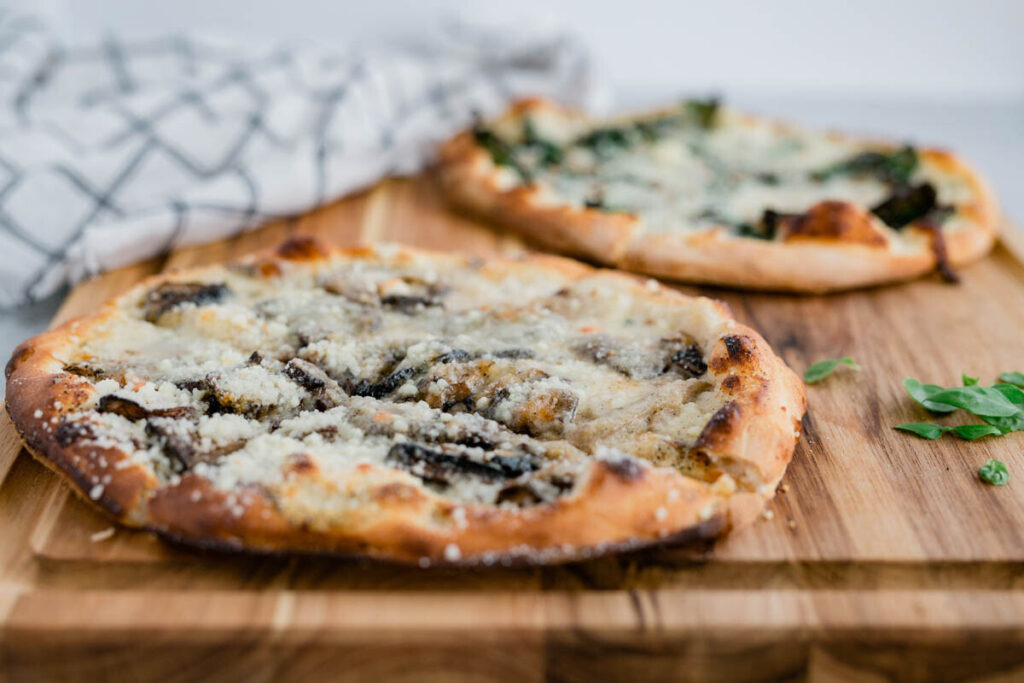
The Toppings
It’s probable that the toppings on hand-tossed or pan pizzas would be the similar. In contrast, the crust on a classic Margherita pizza made the old-fashioned way is thinner. Because of this, less sauce and cheese can be used, and fewer toppings can be added. Toppings for thin crust pizza include sauce, mozzarella, herbs, vegetables, meat, and olive oil.
It’s up to your imagination what kind of toppings you’d like to put on a hand-tossed pizza. Cheese, basil, and sauce are all useful items to have on hand. Be creative and try a white sauce mushroom pizza. Or a tandoori chicken pizza for some spice, with a delicious naan crust. Remember, hand-tossed pizza is meant to be picked up and eaten with your hands. So be on the conservative side.
The thicker crust of the pan pizza can accommodate many more toppings. Melted white cheddar, mozzarella, fontina, provolone, and asiago make a cheesy and flavorful, crusty pan pizza.
When it comes to pizza toppings, you have a lot of freedom to experiment and create your ideal Pizza. Many pizza eaters add toppings beyond pepperoni and veggies. Green onions and Parmesan cheese would be great on top of the tomato sauce. Pan pizza is extra thick compared to hand tossed. Some are even best when eaten with utensils.
The use of cheese is much more liberal when topping a pan pizza compared to a hand-tossed one. Therefore, it usually has the appearance of being buttery and soft, rather than dry. If you enjoy cheese but dislike the blandness of pie crust, this is the solution.
Overall, both pizza varieties offer an equal selection of toppings. However pan pizza will allow you to load up on your favorites. Whichever style of crust you choose, plan to make it your pizza.
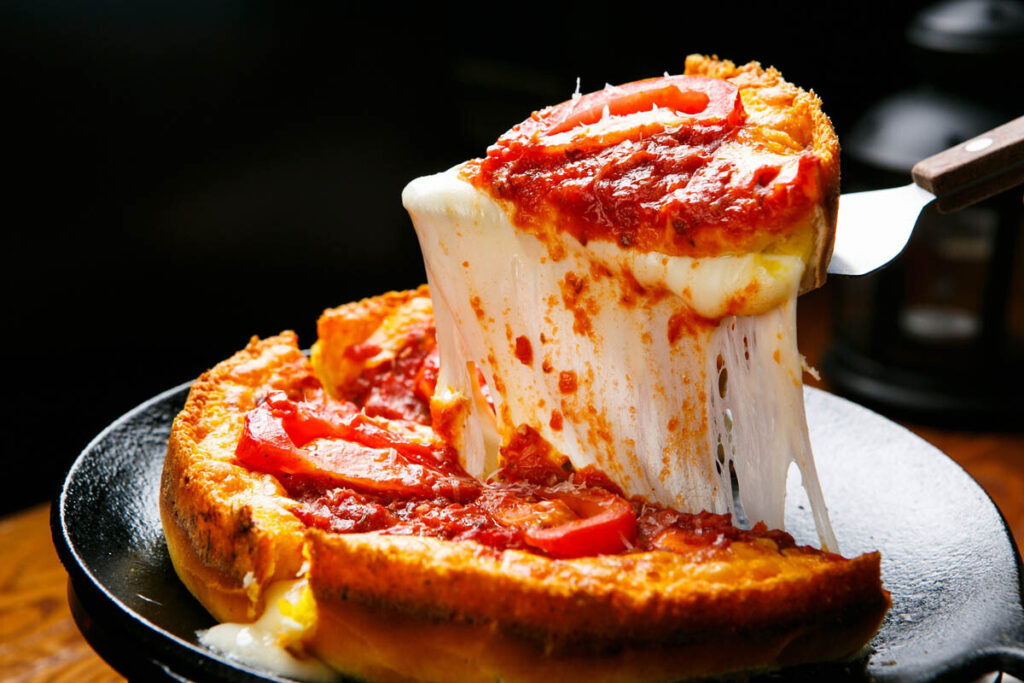
The Taste And Texture
Both styles of Pizza, as we mentioned before, have a satisfying crunch to them. The hand-tossed pizza crust is drier and more easily blistered than pan pizza. Plus thin crust pizza usually tastes better with less toppings.
Compared to pan pizza, the toppings on hand-tossed pizzas are typically more modest. On the plus side, they tend to be healthier than their pan-pizza counterparts. Pizza lovers who prefer a lighter hand on the oil should opt for a hand-tossed pie. They have a crunch to them when you bite into them because of how dry they are. Pan pizza is light and airy, similar to the texture of bread. A bready, thick crust that may be an inch or more in height.
If you spray oil on the bottom of the pan before baking, the Pizza’s crust will turn out crispy and gold. In addition, the crust’s outer edges won’t look the same as they do on a pizza that cooks on a pizza stone.
Pan pizza’s thicker crust allows for more cheese, sauce, and toppings. Usually, these embellishments will reach out to the crust’s outer rim. The extra cheese on a pan pizza makes the crust softer than hand-tossed. The pizza’s golden crust gives it a texture between crisp and chewy.
Hand-tossed vs Pan pizza: The Conclusion
Choosing the best artisan Pizza is a matter of taste, so there is no right or wrong answer. The original pan pizza has a thicker crust and a more buttery flavor. While the hand-tossed Pizza has a thinner crust and a lighter, crispier texture, and both are delicious. The choice of pizza toppings is ultimately a matter of personal preference.

